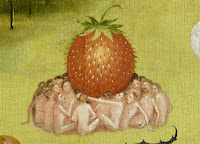Can you Game the Art market?

Intriguing online talk from The Art Newspaper looking at whether the art market can be manipulated by gaming type behaviour. Anna Brady, Anny Shaw and Georgina Adam from the journal discussed whether manipulation of the art market could occur in the same way that buyers influenced the stock price of Gamestop recently. Adam carefully laid out how the art market was different and this probably wouldn’t happen but they went on to discuss ways people do try to manipulate the market. They discussed some interesting recent cases such as the Zombie Formalists which gave me lots to look up and learn more about. They then talked about Non Fundable Tokens (NFTs) in light of the recent sale of a digital only art work by Christie’s Beeple’s “Everydays: The first 5,000 days”, the first work of this type to be sold by an auction house. The discussed the possible benefits to the market of applying NFTs to physical works as well as digital only ones. They ended by looking at how art fairs had c














